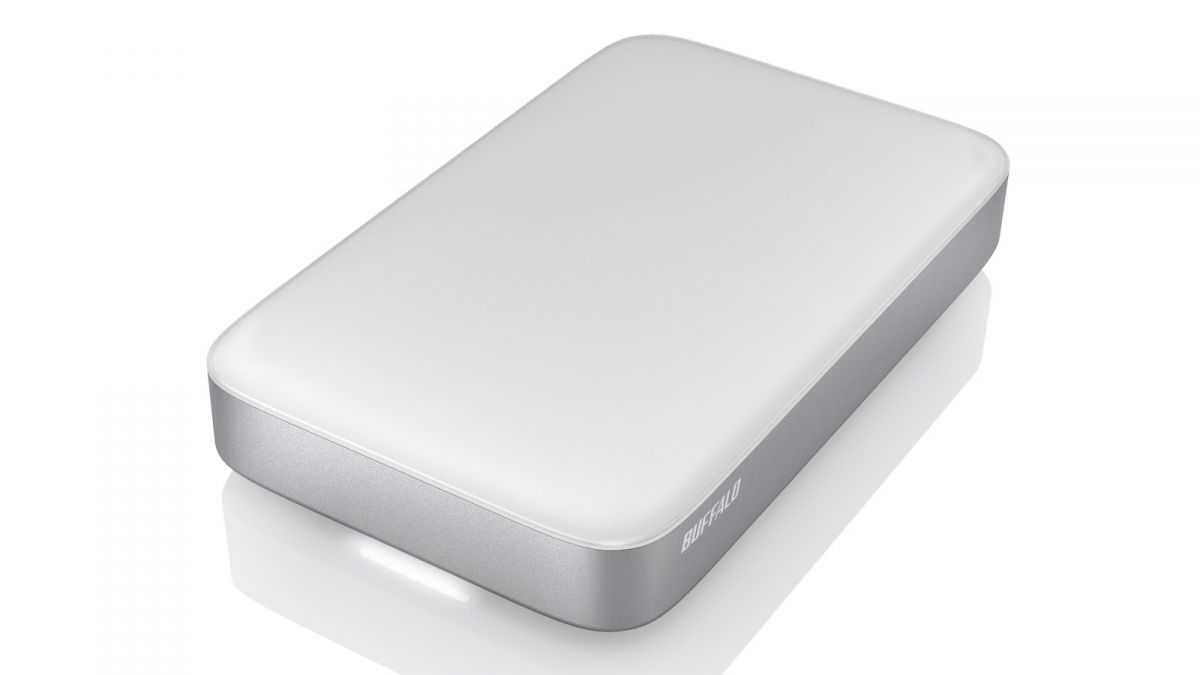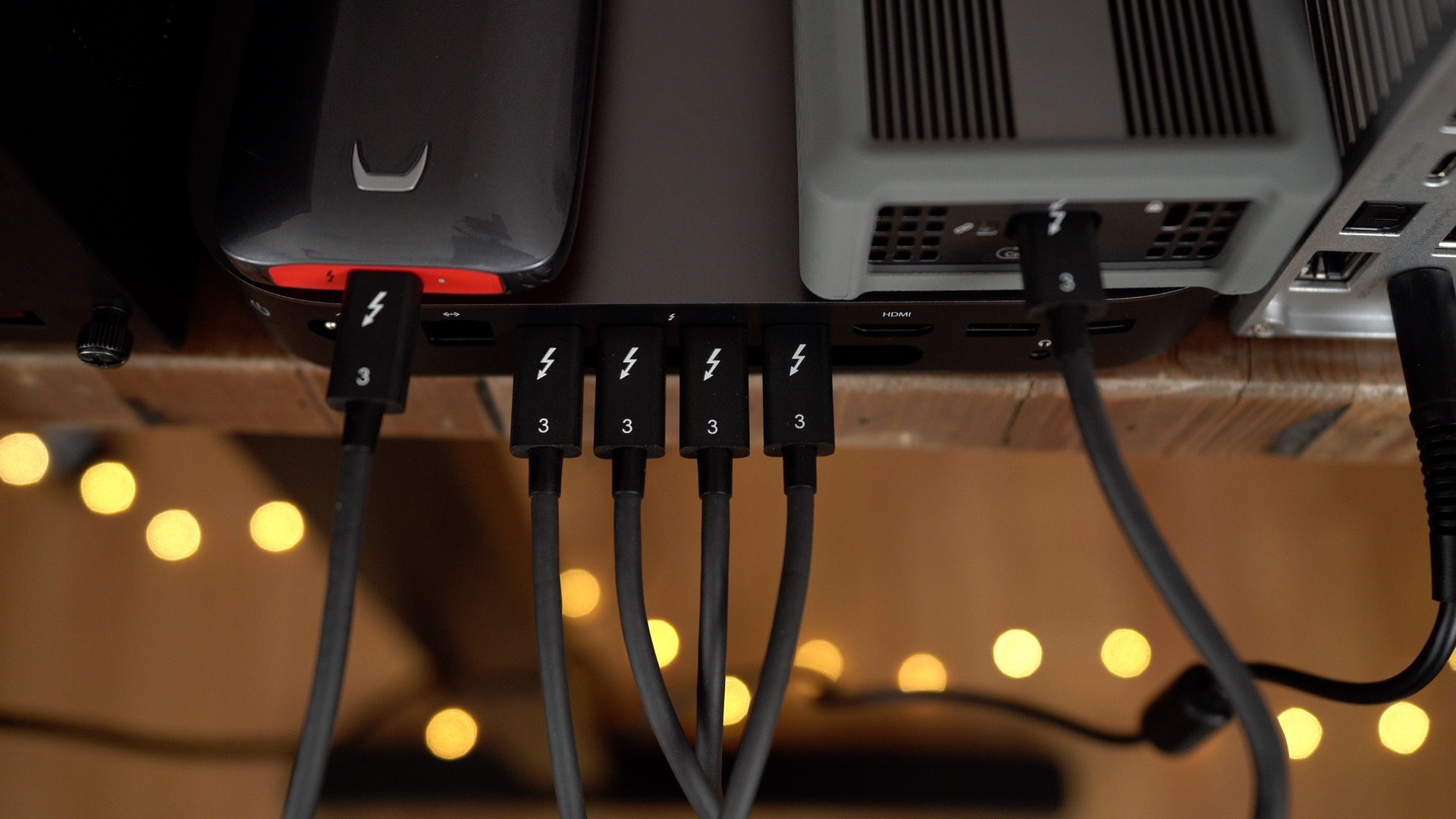The hard drives in the new 2018 Mac mini are PCIe which means they are very fast, but also expensive. Unlike previous models, you cannot upgrade the internal hard drive. It is soldered in. But thanks to the USB-C interface on the new Mac Mini, an external SSD drive is now a good option. I chose to buy the smaller (and cheaper) 250GB Mac Mini and supplement it with a 500GB external SSD drive.
The new 2018 Mac mini can now be configured with a 6 Core 3.2Ghz Intel Core i7 8th Generation desktop class cpu for $1299. This is a high-end powerful desktop cpu that blows away the performance of the previous laptop class chips. These days, having one of the best external hard drives for your Mac is a necessity, especially for professionals in the creative field. Upgrading your Mac storage, after all, can be costly at.
USB-C Gen 2 can handle the speeds of most (but not all) SSD drives. So unless you want a very high-end solution, you'll be fine using an external SSD over USB. An external SSD drive plugged in via USB-C will only be 1/5 the speed of the new internal PCIe drives, but it's still fast. The external SSD drive on my new mac mini is faster than the internal non-PCIe SSD drive on my previous mac mini.

1. Buying a drive.
My first purchase was a Samsung S5. It's fast, it's USB-C Gen 2, and it's cheap. But it caused a 30-second delay each time my mac booted up. Apparently, this is a common problem nnd Apple support were unable to help me resolve it.
The drive I ended up using was the Seagate Fast SSD. It's fast and works well. I purchased the 500GB version. I've already filled it up so end hindsight I publish should have gone for the 1 TB version but I was trying to save soem money.
2. What to put on it.
Now that you've connected your drive you need to choose which data to store on it. I used to recommend using your new SSD as the boot drive, but given that the internal SSD drive is now faster, you are better off booting off your internal drive and just putting some files on the external drive.
I kept OSX and my applications on my internal boot drive, as well as my users home folder. So my internal SSD drive looks like this:
Best External Storage For Mac Mini 2018 Ports
- Applications
- Library
- System
- Users
Best External Storage For Mac Mini 2018 Release
I moved most the large folders from inside my Users folder onto my external SSD. I did not change my home folder to be the external SSD. I copied the files out of my home folder. I did al this when I was migrating the data accrossform my old MAc because it did not all fit in my new Users folder.
Here's what I moved to my new external SSD Drive:
- Documents (from my user folder – 40GB)
- Downloads (from my user folder – 5GB)
- Mainstage Sounds (from System Folder – 60GB)
- Movies (from my user folder – 10GB)
- Music (from my user folder – 60GB)
- Pictures (from my user folder including my photos library – 140GB)
When you move your Music, Pictures and MainStage files you need to tell iTunes, Apple Photos and Mainstage the new location.

1. Buying a drive.
My first purchase was a Samsung S5. It's fast, it's USB-C Gen 2, and it's cheap. But it caused a 30-second delay each time my mac booted up. Apparently, this is a common problem nnd Apple support were unable to help me resolve it.
The drive I ended up using was the Seagate Fast SSD. It's fast and works well. I purchased the 500GB version. I've already filled it up so end hindsight I publish should have gone for the 1 TB version but I was trying to save soem money.
2. What to put on it.
Now that you've connected your drive you need to choose which data to store on it. I used to recommend using your new SSD as the boot drive, but given that the internal SSD drive is now faster, you are better off booting off your internal drive and just putting some files on the external drive.
I kept OSX and my applications on my internal boot drive, as well as my users home folder. So my internal SSD drive looks like this:
Best External Storage For Mac Mini 2018 Ports
- Applications
- Library
- System
- Users
Best External Storage For Mac Mini 2018 Release
I moved most the large folders from inside my Users folder onto my external SSD. I did not change my home folder to be the external SSD. I copied the files out of my home folder. I did al this when I was migrating the data accrossform my old MAc because it did not all fit in my new Users folder.
Here's what I moved to my new external SSD Drive:
- Documents (from my user folder – 40GB)
- Downloads (from my user folder – 5GB)
- Mainstage Sounds (from System Folder – 60GB)
- Movies (from my user folder – 10GB)
- Music (from my user folder – 60GB)
- Pictures (from my user folder including my photos library – 140GB)
When you move your Music, Pictures and MainStage files you need to tell iTunes, Apple Photos and Mainstage the new location.
For iTunes, firstly copy all your music files across to the new SSD. (users/yourname/music/iTunes) Then go to Preferences, Advanced, and find ‘iTunes Media folder location'. Click ‘Change' and select the new folder.
For Photos you need to copy the folder called ‘Photo's Library' across, then restart the Photos App while holding the Option key. This gives you the option to select your new Photo library from the external SSD.
Photos should open the newly copied library and you should be able to see your photos. If that is the case then go to preferences and select ‘use as System Photo Library' to make this change permanent.
There are some applications that will still want to use files from within your home folder on your internal SSD. That's okay. Best free photoshop program for mac. I allow them to do that.
I find it helpful in my own mind to know which files are where so I have my documents, my music and my photos on my external SSD and I have everything else on my internal one. Mac os x take photo.
But you can arrange them how you like.

